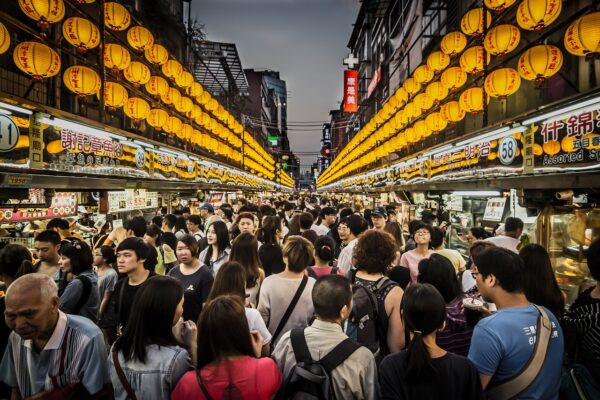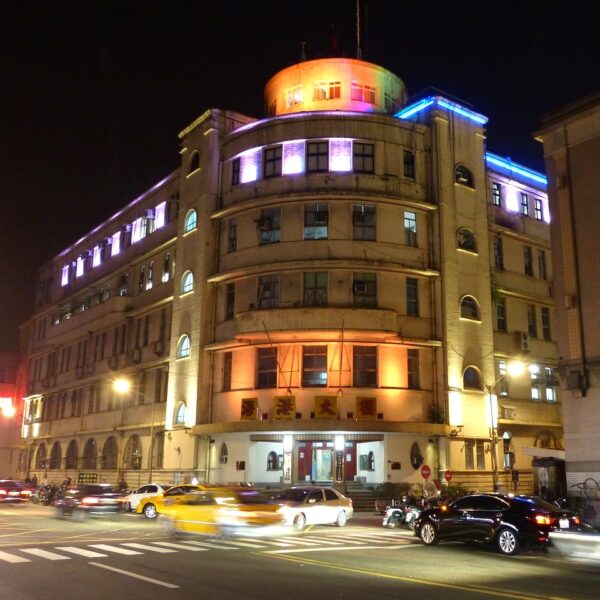Keelung & Heping Island | Taiwan
 Keelung is very different to sleek, glitzy Taipei. This gritty port city, surrounded by steep green hills, can feel unbelivably crowded. But it’s a place packed full of history. The Spanish arrived in 1626 and established a small colony. They traded with the area’s Ketagalan tribespeople until 1642, when a garrison diminished by disease and redeployment proved no match for a well-armed expeditionary force sent by the Dutch East India Company outpost in Tainan.
Keelung is very different to sleek, glitzy Taipei. This gritty port city, surrounded by steep green hills, can feel unbelivably crowded. But it’s a place packed full of history. The Spanish arrived in 1626 and established a small colony. They traded with the area’s Ketagalan tribespeople until 1642, when a garrison diminished by disease and redeployment proved no match for a well-armed expeditionary force sent by the Dutch East India Company outpost in Tainan.
After themselves losing Tainan to Koxinga’s army, the Dutch set up a base here in 1663 but quit within five years. The local indigenous people then enjoyed a relatively peaceful century and a half, until Han migrants from the Chinese mainland began settling the north coast and competing for land and access to freshwater.
After Dutch and Spanish… Americans and French
A key reason for Keelung’s rise lies in the hills behind the city. Taiwan’s richest coal deposits were found in rain-drenched valleys to the east and southeast, and demand from international shipping lines in the third quarter of the 19th century created the impetus to develop both a mining industry (and eventually a branch railroad to shift the coal) and a harbour where steamships could refuel. Matthew C. Perry, the US Navy commander remembered for ending Japan’s self-imposed isolation, anchored near Keelung in 1854 en route to Yokohama, so he could investigate the former’s potential as a way station. However, Washington didn’t act on his proposal that the US claim sovereignty over Taiwan. Twenty years later, when Japan launched a punitive expedition against an indigenous tribe in the south of Taiwan that had massacred Japanese sailors, the incompetence of the Qing authorities ruling the island allowed the Japanese fleet to take on coal and other supplies at Keelung before launching their invasion!

The French forces suffered few casualties in battle but lost hundreds of men to cholera and typhoid. The remains of at least 600 lie in the French Military Cemetery in Keelung, also known as the Sino-French War Memorial Park. The cemetery is about halfway between Keelung’s railway station and Heping Island; several bus services stop nearby, or you can visit as part of a Life of Taiwan private guided tour.
Like almost every part of Taiwan, Keelung saw rapid development during the 1895-1945 period of Japanese rule, yet it remains thoroughly and enjoyable ‘Taiwanese’ in terms of culture, cuisine, and atmosphere.
Arriving or leaving by ship
Well into the 1950s, before a proper road had been built to connect Yilan County with Hualien County, the safest and most comfortable way to reach Hualien from Taipei was to take a train to Keelung and then a ferry to Hualien. At that time, small boats also linked Keelung with Pengjia Islet, 56 km (35 miles) to the northeast and then inhabited by a dozen or so fishing families. Nowadays the islet has no permanent residents, only coast guard personnel and a handful of government employees who operate the 116-year-old lighthouse. Keelung Islet is much closer and far easier to visit; between April and October there are regular excursions that last around four hours in total, including two and a half hours on this uninhabited volcanic rock. The short hike up to the lighthouse is steep yet worth it for ocean views.
In recent years, Keelung has emerged as one of Taiwan’s two main cruise-ship destinations — the other being Kaohsiung in the south — in part because cargo handling is now done at more modern facilties elsewhere. If it’s your first time in Taiwan, disembarking here and then traveling onto Taipei or Hualien can be confusing. And if you’ve got quite a bit of luggage, it’s wise to arrange in advance for one of our experienced bilingual driver-guides to meet you dockside and ensure your Taiwan journey gets off to a smooth start.
Ferry journeys from Taiwan to the Matsu Islands begin in Keelung. The voyage, which takes between eight and ten hours, is an interesting alternative to flying.
Fortifications and fishing boats
If you don’t have a lot of time to spend in Keelung, head for the eastern side of its superb natural harbour. As you’d expect of a place that has been fought over again and again, the city boasts a number of forts. One stronghold that has two names (Ershawan Fort and Haimen Tianxian) is 2.4 km (1.5 miles) from the railway station and can be visited by anyone willing to spend ten minutes walking up from the main road, where frequent city buses stop. Built in the 1880s, this ridgetop complex of bunkers and cannon emplacements appeals to everyone with an interest in military history. It makes sense to combine a stop here with a quick look at the Sino-French War Memorial Park.
Continuing northeast, the community of Zhengbin is notable for the Old Fishermen’s Association Building and it’s Waterside Colour Houses. The former edifice, which dates from the Japanese colonial period, was recently restored and converted into an exhibition venue. The latter were once drab concrete homes stained by Keelung’s damp weather — it’s amazing what a lick of paint can do!
Basing yourself in Keelung for a night or two can make a lot of sense if your travel plans include the quaint hillside town of Jiufen and/or the surreal coastal rockforms at Yehliu Geopark.
Heping Island
Formerly known by at least two different names, what’s now called Heping (Peace) Island is connected to the mainland by a bridge. Notable for its rugged topography and varied geology, the island is also historically important. It was here that the Spanish set up their base; the replica fort is unconvincing, but what’s left of their main church has been located. And it was here, a few decades later, that the Dutch East India Company tried and failed to turn a profit. Ancient graffiti in one of the island’s caves suggests that Dutch Roman Catholics used it to conduct covert services. (At that time, the Dutch Republic was officially and intolerantly Protestant.) If you’ve kids in tow and they like swimming and chasing crabs, expect to spend half a day exploring the island; paying to enter Heping Island GeoPark is money very well spent, you’re sure to agree.
Day trips to Keelung often end at Miaokou Night Market, one of Taiwan’s liveliest evening bazaars. Many of the businesses here have English-language menus; even so, you’ll benefit from being accompanied by someone who speaks Mandarin, as vendors often ask how spicy you want your food or if you need a particular sauce. And this being a seaside town surrounded by fishing ports like Zhengbin and Badouzi, there’s no shortage of seafood restaurants serving everything from lobster to sashimi. Has reading about food whetted your appetite? If you’d like to see Keelung as part of a private tour, contact us today for further information.

